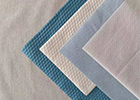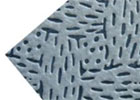Factory-Direct Nonwoven Fabric Solutions: Elevating Hospital Hygiene
Introduction
In the healthcare industry, maintaining hospital hygiene is of utmost importance. With the ever-present risk of infections and diseases, hospitals need effective strategies to control and prevent the spread of germs. One such solution that has been successful in elevating hospital hygiene is the utilization of factory-direct nonwoven fabric.
Importance of hospital hygiene and infection control
Hospital hygiene plays a critical role in ensuring patient safety and preventing the transmission of infections. A clean and hygienic environment is essential to minimize the risks associated with healthcare-associated infections (HAIs). HAIs can lead to prolonged hospital stays, increased healthcare costs, and, in severe cases, patient morbidity and mortality. By implementing strict hygiene protocols, hospitals can effectively reduce the incidence of HAIs and provide a safe environment for both patients and healthcare workers.
Role of nonwoven fabric in maintaining hospital hygiene
Nonwoven fabric has become a game-changer in enhancing hospital hygiene. These fabrics are made from synthetic fibers or natural materials, and they have a unique structure that offers several advantages in infection control. Nonwoven fabrics are highly durable, yet lightweight, making them ideal for use in medical settings. They are also highly absorbent, allowing for effective fluid and moisture management. Additionally, nonwoven fabrics have excellent barrier properties, preventing the transfer of microorganisms and contaminants. This helps to maintain a sterile environment, reducing the risk of cross-contamination.
Moreover, nonwoven fabrics are hypoallergenic and non-irritating, making them suitable for sensitive applications, such as wound dressings and surgical drapes. They are also easy to handle and dispose of, ensuring convenience and proper waste management.
Best examples of factory-direct nonwoven fabric solutions
Several companies specialize in providing factory-direct nonwoven fabric solutions for the healthcare industry. One such example is XYZ Nonwovens, which offers a wide range of nonwoven fabric products tailored specifically for hospital hygiene. Their products include disposable surgical gowns, face masks, and sterile packaging materials. ABC Nonwoven Fabrics is another notable company that provides nonwoven fabric solutions for infection control, offering high-quality materials for surgical and medical applications.
By incorporating factory-direct nonwoven fabric solutions into their hygiene protocols, hospitals can ensure a safer and cleaner environment for their patients and healthcare staff. These innovative solutions have revolutionized hospital hygiene and continue to play a vital role in combating infections and promoting better healthcare outcomes.

Advantages of Factory-Direct Nonwoven Fabric Solutions
Cost-effectiveness and bulk purchasing options
One of the major advantages of opting for factory-direct nonwoven fabric solutions in hospital hygiene is the cost-effectiveness it offers. By eliminating middlemen and purchasing directly from the manufacturer, hospitals can significantly reduce their procurement costs. Factory-direct purchasing also allows hospitals to take advantage of bulk buying options, enabling them to negotiate better prices and save on overall expenses.
Moreover, nonwoven fabrics have a longer shelf life compared to traditional textiles, reducing the need for frequent replacement and further contributing to cost savings. These fabrics are designed to withstand rigorous use, ensuring durability and performance over time. With factory-direct sourcing, hospitals can access high-quality nonwoven fabrics at competitive prices, maximizing their budget allocation for other crucial healthcare initiatives.
Customizability and tailored solutions for specific hospital needs
Another advantage of factory-direct nonwoven fabric solutions is the ability to tailor products to suit specific hospital needs. Manufacturers understand that different healthcare facilities have unique requirements, and they offer customization options to meet those needs. Hospitals can collaborate with nonwoven fabric suppliers to develop products that address their specific hygiene challenges.
For example, a hospital may require nonwoven fabrics with enhanced fluid resistance for use in surgical drapes or gowns. Factory-direct suppliers can work closely with hospitals to create specialized fabrics that meet the necessary standards while ensuring comfort and safety for healthcare professionals and patients. This level of customization helps hospitals maintain high standards of hygiene while optimizing operational efficiency.
In addition to customization, factory-direct suppliers often offer a wide range of nonwoven fabric solutions, including different weights, colors, and finishes. This variety allows hospitals to choose the most suitable fabric for different applications, ensuring optimal performance and functionality.
By utilizing factory-direct nonwoven fabric solutions, hospitals can access cost-effective options and enjoy customized products that address their specific hygiene needs. These advantages not only enhance hospital hygiene and infection control but also contribute to improved patient outcomes and overall operational efficiency. With the continuous advancements in nonwoven fabric technology, the future holds even more exciting possibilities for elevating hospital hygiene to new heights.
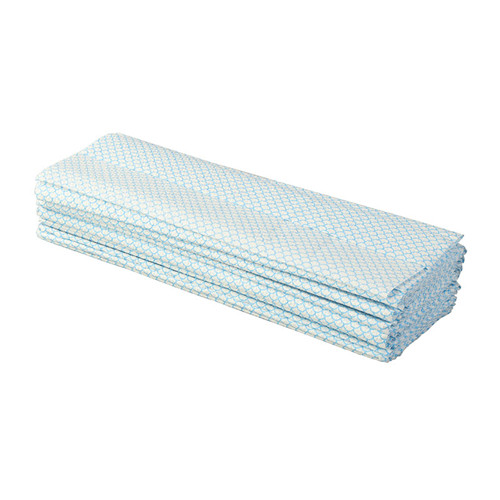
Nonwoven Fabric Types for Hospital Hygiene
Spunbond nonwoven fabric and its uses
Spunbond nonwoven fabric is a popular choice for various hospital hygiene applications. It is made by spinning continuous filaments of polymer and then bonding them together with heat and pressure. This fabric is known for its strength, durability, and breathability, making it suitable for use in medical gowns, sterilization wraps, and surgical drapes.
The unique structure of spunbond nonwoven fabric allows it to provide excellent barrier properties, preventing the transmission of bacteria and other contaminants. It also has high resistance to fluids, making it effective for use in protective clothing and surgical masks. This fabric type is lightweight, comfortable to wear, and hypoallergenic, ensuring the comfort and safety of healthcare professionals and patients.
Meltblown nonwoven fabric and its applications
Meltblown nonwoven fabric is another key type of fabric used in hospital hygiene. It is produced by melting polymers and then extruding them into fine fibers using high-velocity hot air. These fibers are randomly interlaced and bonded together to form a nonwoven fabric with microfiber filtration properties.
The unique characteristics of meltblown nonwoven fabric make it ideal for applications such as surgical masks, air filters, and absorbent wipes. It provides superior filtration efficiency, capturing small particles and airborne contaminants. The fabric's fine fiber structure creates a dense web with excellent liquid absorption capabilities, making it effective for use in wound dressings and absorbent pads.
Meltblown nonwoven fabric is soft, lightweight, and gentle on the skin. Its high tensile strength ensures durability and tear resistance, even when wet. This fabric type also has good thermal insulation properties, providing comfort to patients during surgical procedures or in cold environments.
In conclusion, both spunbond and meltblown nonwoven fabrics play crucial roles in maintaining hospital hygiene. Their unique properties and versatile applications make them essential components of various medical products. By utilizing the right nonwoven fabric types for different purposes, hospitals can enhance infection control, promote patient safety, and improve overall hygiene standards.

Hygienic Properties of Nonwoven Fabric
Bacterial filtration efficiency (BFE) and viral filtration efficiency (VFE)
Nonwoven fabric plays a crucial role in maintaining hospital hygiene by providing excellent bacterial and viral filtration efficiency. The unique structure of nonwoven fabric allows it to effectively capture and filter out bacteria and viruses, preventing their transmission. This is especially important in healthcare settings where the risk of infection is high.
The BFE and VFE properties of nonwoven fabric are measured through standardized testing methods. BFE refers to the percentage of bacteria filtered out by the fabric, while VFE measures the filtration efficiency of viruses. Effective nonwoven fabric should have a high BFE and VFE, ensuring that it provides a reliable barrier against harmful pathogens.
Fluid resistance and barrier properties
Another important hygienic property of nonwoven fabric is its fluid resistance and barrier properties. Nonwoven fabric designed for hospital hygiene applications should have the ability to repel fluids, preventing them from permeating through the fabric and reaching the wearer's skin.
This fluid resistance property is vital in situations where there is a risk of exposure to bodily fluids, such as during surgical procedures or when handling infectious materials. Nonwoven fabric with excellent barrier properties ensures that healthcare professionals and patients are protected from potential contamination.
In addition to fluid resistance, nonwoven fabric should also provide a strong physical barrier against contaminants. The fabric's structure and bonding techniques contribute to its ability to act as a reliable barrier, preventing the passage of microorganisms and particles.
Overall, the hygienic properties of nonwoven fabric, including its bacterial and viral filtration efficiency, as well as fluid resistance and barrier properties, make it an ideal choice for hospital hygiene applications. By utilizing high-quality nonwoven fabric, hospitals can enhance infection control, protect healthcare professionals and patients, and elevate overall hygiene standards in the healthcare environment.
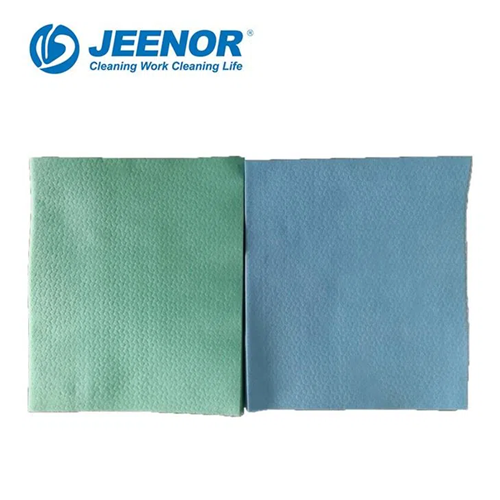
Nonwoven Fabric for Medical Apparel
Surgical gowns and drapes
When it comes to hospital hygiene, surgical gowns and drapes play a critical role in preventing the contamination of both patients and healthcare professionals. Nonwoven fabric offers a reliable solution for medical apparel, ensuring the highest level of hygiene during surgical procedures.
Nonwoven fabric used for surgical gowns and drapes is designed to provide excellent barrier properties. Its unique structure and bonding techniques create a physical barrier, preventing the passage of microorganisms and particles. This ensures that healthcare professionals are protected from potential contamination and reduces the risk of surgical site infections.
Not only does nonwoven fabric offer a strong barrier, but it also provides comfort and breathability. Surgical procedures can often be lengthy, and healthcare professionals need to be able to move and work comfortably. Nonwoven fabric allows for flexibility and breathability, ensuring that the wearer can perform their tasks effectively while maintaining a high level of hygiene.
Protective clothing and coveralls
In addition to surgical gowns and drapes, nonwoven fabric is also utilized in the production of protective clothing and coveralls. These garments are essential for ensuring the safety of healthcare professionals when dealing with hazardous materials or infectious patients.
Nonwoven fabric used in protective clothing and coveralls is designed to be durable and resistant to fluids. It provides a strong barrier against bodily fluids, preventing them from reaching the wearer's skin and reducing the risk of contamination. The fabric's fluid resistance properties make it particularly suitable for situations where there is a high risk of exposure to infectious materials.
Furthermore, nonwoven fabric offers ease of movement and comfort, allowing healthcare professionals to carry out their duties without restrictions. The fabric's lightweight nature ensures that protective clothing and coveralls do not impede mobility, giving healthcare professionals the flexibility they need to deliver optimal care while maintaining a sterile environment.
By utilizing factory-direct nonwoven fabric solutions for medical apparel such as surgical gowns and drapes, as well as protective clothing and coveralls, hospitals can elevate their hygiene standards. These high-quality fabric options provide the necessary barrier properties, comfort, and fluid resistance required in healthcare settings, enhancing infection control and safety for both patients and healthcare professionals.
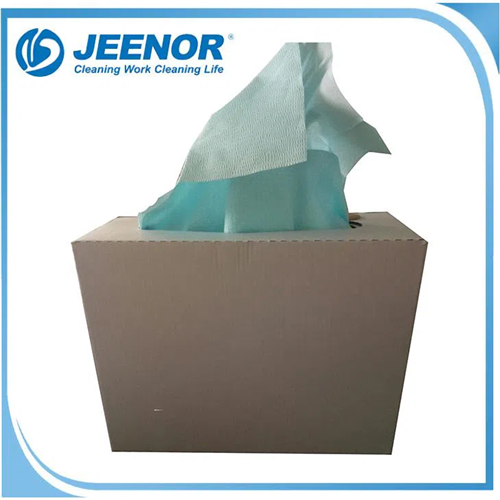
Nonwoven Fabric for Medical Supplies
Face masks and respirators
In the current global health crisis, face masks and respirators have become essential items for protecting against the spread of infectious diseases. Nonwoven fabric plays a crucial role in the production of these medical supplies, providing effective filtration and breathability.
Nonwoven fabric used for face masks and respirators is designed to filter out harmful particles, such as bacteria and viruses, while allowing for easy breathing. The unique structure of nonwoven fabric enables it to capture these particles, preventing them from being inhaled or exhaled by the wearer. This is crucial in maintaining a sterile environment and reducing the risk of transmission.
Additionally, nonwoven fabric offers comfort and fit. Face masks and respirators need to be worn for extended periods, especially by healthcare professionals who are at the forefront of the battle against infectious diseases. The lightweight and soft texture of nonwoven fabric ensure that these protective items are gentle on the skin and do not cause discomfort or irritation.
Surgical caps and shoe covers
In surgical settings, maintaining a sterile environment is of utmost importance. Nonwoven fabric is used in the production of surgical caps and shoe covers to provide an extra layer of protection against contamination.
Surgical caps made from nonwoven fabric prevent hair and scalp particles from falling into the surgical field, minimizing the risk of surgical site infections. The fabric's breathability and moisture resistance contribute to the comfort and functionality of the caps.
Similarly, nonwoven fabric is utilized in the production of shoe covers to prevent the transfer of dirt, germs, and other particles from footwear to the sterile surgical environment. These shoe covers are designed to be slip-resistant and lightweight, ensuring ease of movement for healthcare professionals without compromising hygiene standards.
By utilizing factory-direct nonwoven fabric solutions for medical supplies such as face masks, respirators, surgical caps, and shoe covers, hospitals can elevate their hygiene standards to ensure the safety of both patients and healthcare professionals. These high-quality fabric options provide superior filtration, breathability, comfort, and protection, contributing to enhanced infection control and overall hospital hygiene.
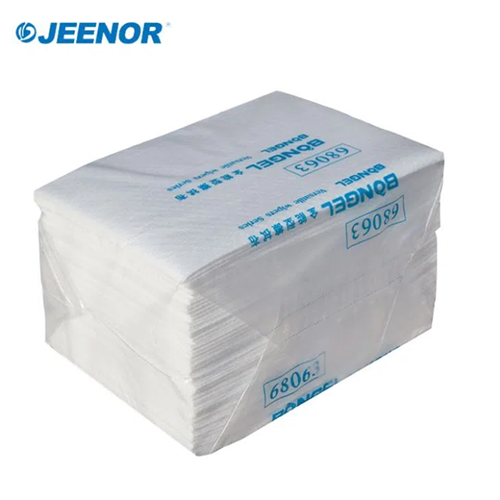
Nonwoven Fabric for Wound Care
Sterile dressing materials
When it comes to wound care, maintaining a sterile environment is crucial for preventing infections and promoting healing. Nonwoven fabric is widely used in the production of sterile dressing materials that provide a barrier between the wound and outside contaminants.
Sterile dressings made from nonwoven fabric create a protective layer that keeps the wound clean and free from bacteria, dirt, and other harmful substances. The fabric's ability to effectively absorb fluids ensures that the wound remains dry, promoting faster healing. These dressings are designed to be gentle on the skin, minimizing discomfort and irritation for the patient.
Absorbent pads and bandages
In addition to sterile dressings, nonwoven fabric is also utilized in the production of absorbent pads and bandages for wound care. These products are designed to effectively manage exudate and promote proper wound healing.
The absorbent pads, made from nonwoven fabric, quickly absorb excess fluid from the wound, preventing excessive moisture buildup that can hinder the healing process. By removing excess moisture, these pads help create an optimal environment for healing.
Bandages made from nonwoven fabric offer secure and comfortable wound coverage. The fabric's soft texture and high breathability promote airflow to the wound, aiding the healing process. These bandages are easy to apply and remove without causing additional pain or damage to the wound.
By utilizing factory-direct nonwoven fabric solutions for wound care, healthcare facilities can enhance their hygiene standards and improve patient outcomes. The high-quality fabric options provide a sterile and absorbent environment for wound healing, reducing the risk of infections and ensuring optimal conditions for recovery.
In conclusion, nonwoven fabric plays a vital role in wound care by providing sterile dressing materials, absorbent pads, and bandages. These products contribute to maintaining a clean and hygienic environment, promoting faster healing, and reducing the risk of complications. By opting for factory-direct nonwoven fabric solutions, healthcare facilities can elevate their hygiene standards and provide the best possible care for their patients.
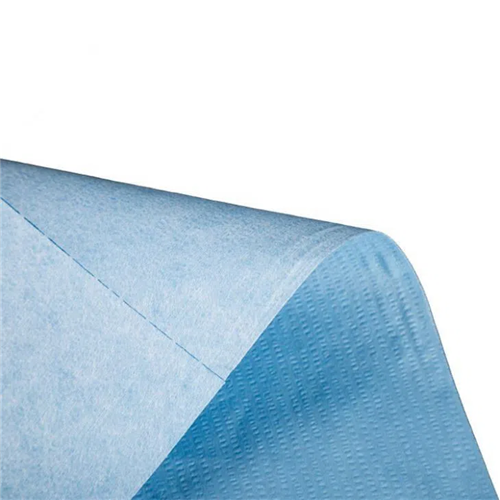
Quality Assurance and Certifications
Compliance with international healthcare standards
Factory-direct nonwoven fabric solutions for wound care prioritize meeting stringent international healthcare standards. These standards ensure the highest level of quality, safety, and effectiveness in the production and use of medical products. By choosing a supplier that complies with these standards, healthcare facilities can be confident in the reliability and performance of their nonwoven fabric materials.
International healthcare standards, such as ISO 13485, dictate the requirements for the design, development, production, and distribution of medical devices. Factory-direct nonwoven fabric solutions adhere to these standards to demonstrate their commitment to delivering safe and effective products. Compliance with these standards ensures that the nonwoven fabric used in sterile dressing materials, absorbent pads, and bandages meet the necessary quality control measures.
Certifications and testing methods
To further guarantee the quality and performance of factory-direct nonwoven fabric solutions, certifications and rigorous testing methods are implemented. Certifications such as ISO 9001 and ISO 14001 provide assurance that the production processes and environmental management systems meet internationally recognized standards.
Testing methods, such as microbial testing, are essential to verify the efficacy of the nonwoven fabric in preventing infection and maintaining a sterile environment. The fabric's absorption capacity is also tested to ensure its ability to effectively manage wound exudate. These tests confirm that the nonwoven fabric materials are of the highest quality and suitable for use in wound care.
Additionally, factory-direct nonwoven fabric solutions may undergo biocompatibility testing to ensure that the materials do not cause any adverse reactions when in contact with the skin. This testing assesses the compatibility between the fabric and the human body, ensuring patient safety and comfort.
By partnering with a supplier that upholds the highest quality assurance standards and possesses relevant certifications, healthcare facilities can elevate their hygiene standards and provide optimal care for their patients. The commitment to compliance, certifications, and thorough testing procedures guarantees that factory-direct nonwoven fabric solutions meet the stringent requirements of the healthcare industry.
In conclusion, choosing factory-direct nonwoven fabric solutions for wound care ensures compliance with international healthcare standards and provides peace of mind in terms of quality and safety. Certifications and comprehensive testing methods further validate the reliability of these solutions. By prioritizing quality assurance and certifications, healthcare facilities can elevate their hygiene practices and enhance patient outcomes.
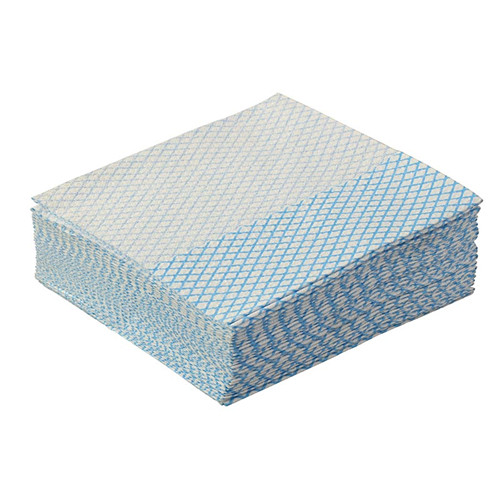
Conclusion
Factory-direct nonwoven fabric solutions have a significant impact on hospital hygiene by ensuring compliance with international healthcare standards and providing reliable and high-quality materials for wound care. By partnering with suppliers that uphold the highest quality assurance standards and possess relevant certifications, healthcare facilities can elevate their hygiene practices and enhance patient outcomes.
Impact of Factory-Direct Nonwoven Fabric Solutions on Hospital Hygiene
Factory-direct nonwoven fabric solutions play a vital role in maintaining hospital hygiene by providing materials that meet stringent international healthcare standards. These standards, such as ISO 13485, ensure that medical products, including nonwoven fabric used in wound care, adhere to the necessary quality control measures. By utilizing factory-direct solutions, healthcare facilities can be confident in the reliability and performance of their nonwoven fabric materials, reducing the risk of infections and ensuring optimal patient care.
Certifications and rigorous testing methods further validate the quality and performance of factory-direct nonwoven fabric solutions. Certifications like ISO 9001 and ISO 14001 assure that production processes and environmental management systems meet internationally recognized standards. Testing methods, such as microbial testing and absorption capacity testing, confirm that the nonwoven fabric effectively prevents infection and manages wound exudate. Additionally, biocompatibility testing ensures patient safety and comfort by assessing compatibility between the fabric and the human body.
By prioritizing quality assurance and certifications in nonwoven fabric sourcing, healthcare facilities can create a hygienic environment that meets the stringent requirements of the healthcare industry. This commitment to quality and safety elevates hospital hygiene standards, reduces the risk of complications and infections, and enhances patient outcomes.
Future Advancements and Possibilities in Nonwoven Fabric Technology
The field of nonwoven fabric technology is continuously advancing, offering exciting possibilities for the future of hospital hygiene. Research and development efforts are focused on enhancing the performance, durability, and sustainability of nonwoven fabrics. Advancements in fabric construction techniques and material innovations aim to improve the strength and effectiveness of nonwoven fabrics in wound care and other medical applications.
Moreover, eco-friendly nonwoven fabrics are being developed to minimize the environmental impact of hospital waste. These sustainable solutions aim to reduce waste generation by using recyclable and biodegradable materials.
Furthermore, the integration of smart technologies into nonwoven fabrics holds promising possibilities. Smart fabrics embedded with sensors can provide real-time monitoring of wound healing, allowing healthcare professionals to intervene promptly and optimize patient care.
In conclusion, factory-direct nonwoven fabric solutions have a significant impact on hospital hygiene, ensuring compliance with international healthcare standards and providing high-quality materials for wound care. With continuous advancements in nonwoven fabric technology, the future holds exciting possibilities for improving hospital hygiene and patient outcomes. By staying up-to-date with these advancements, healthcare facilities can further enhance their hygiene practices and provide optimal care for their patients.




